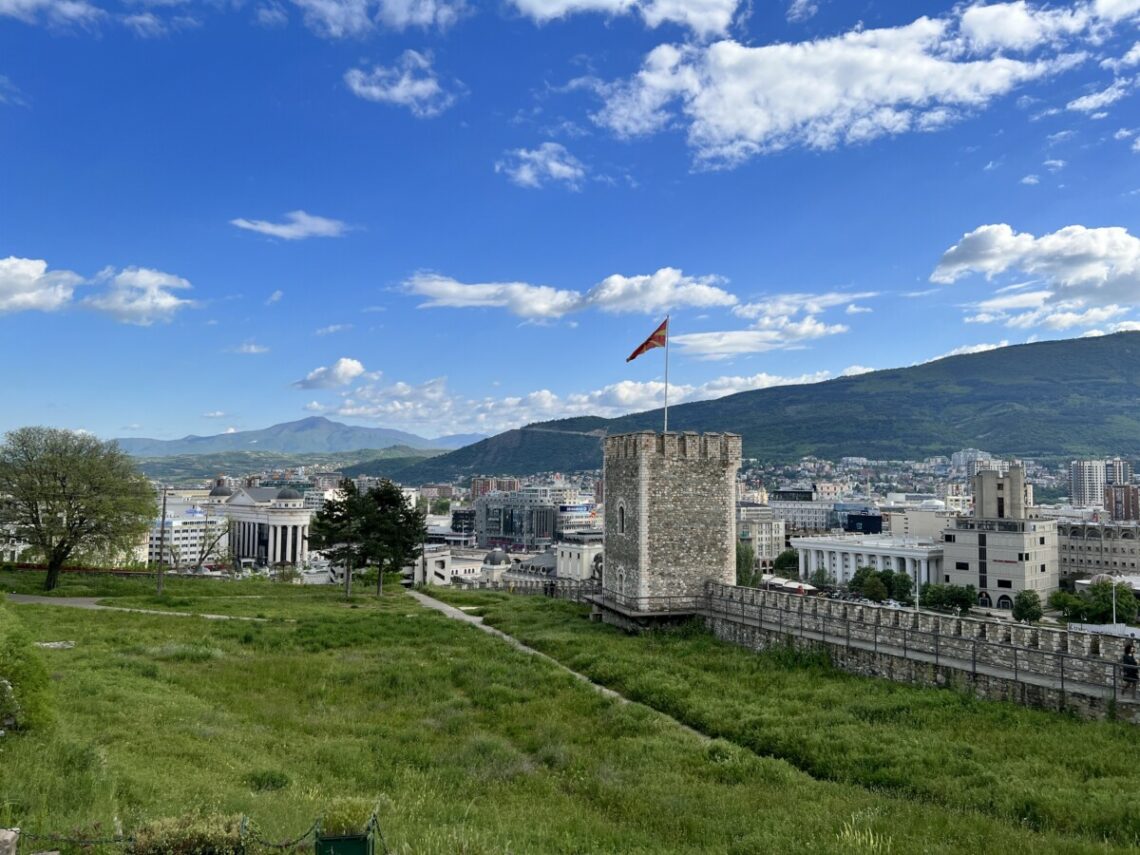
Skopje – The capital of Macedonia
Remember FYROM? The Former Yugoslav Republic of Macedonia. This awkward name emerged after Yugoslavia’s dissolution when FYROM and Greece couldn’t agree on using the name Macedonia. Fortunately, they reached a compromise, and since 2019, FYROM became North Macedonia. The disagreement stemmed from the ancient kingdom of Macedonia, which spans both todays North Macedonia and Greece. Since only about 30% was north of today’s border, Greece felt it had more claim to the name.
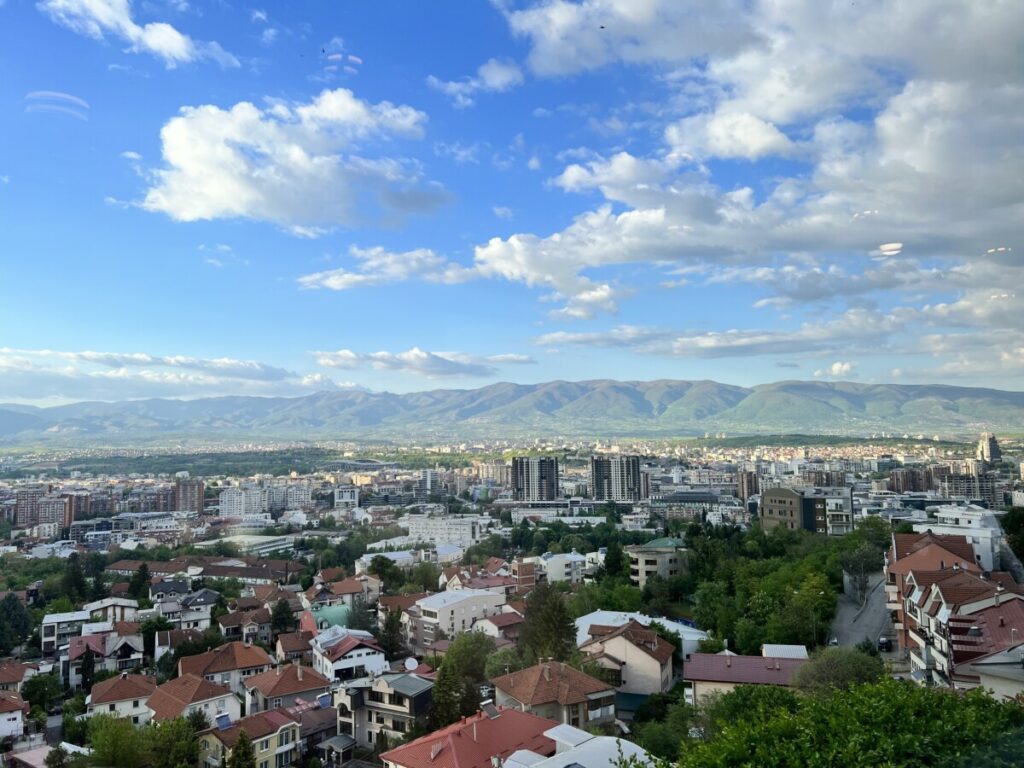
Aside from the conflict with Greece, North Macedonia has remained relatively peaceful down south, while its Balkan neighbors have seen much war and strife.
But enough history for now. Let’s talk about Macedonia as a travel destination! If you’re looking to try something new and don’t need saltwater, Macedonia is definitely worth considering. Although it has no coastline and is landlocked between Albania, Greece, Bulgaria, Kosovo, and Serbia, it boasts many lakes with turquoise waters and an affordable price level. While the standards might not meet the expectations of the most discerning travelers, you can find all types of experiences. Everything we encountered was clean, tidy, and more than adequate.
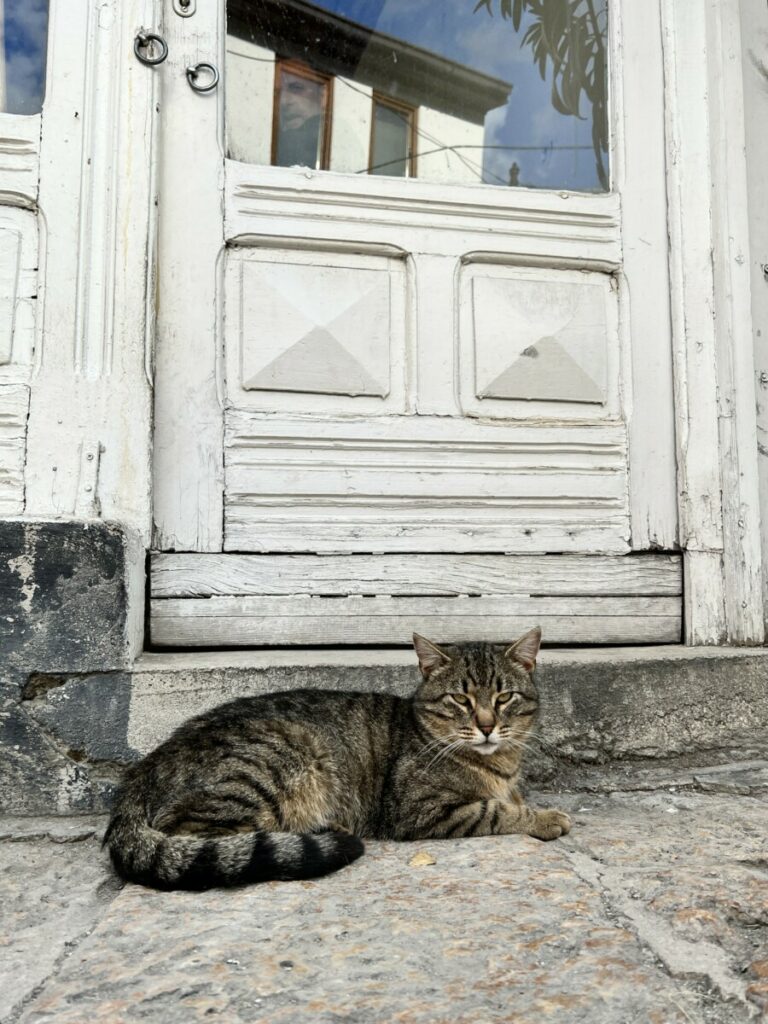
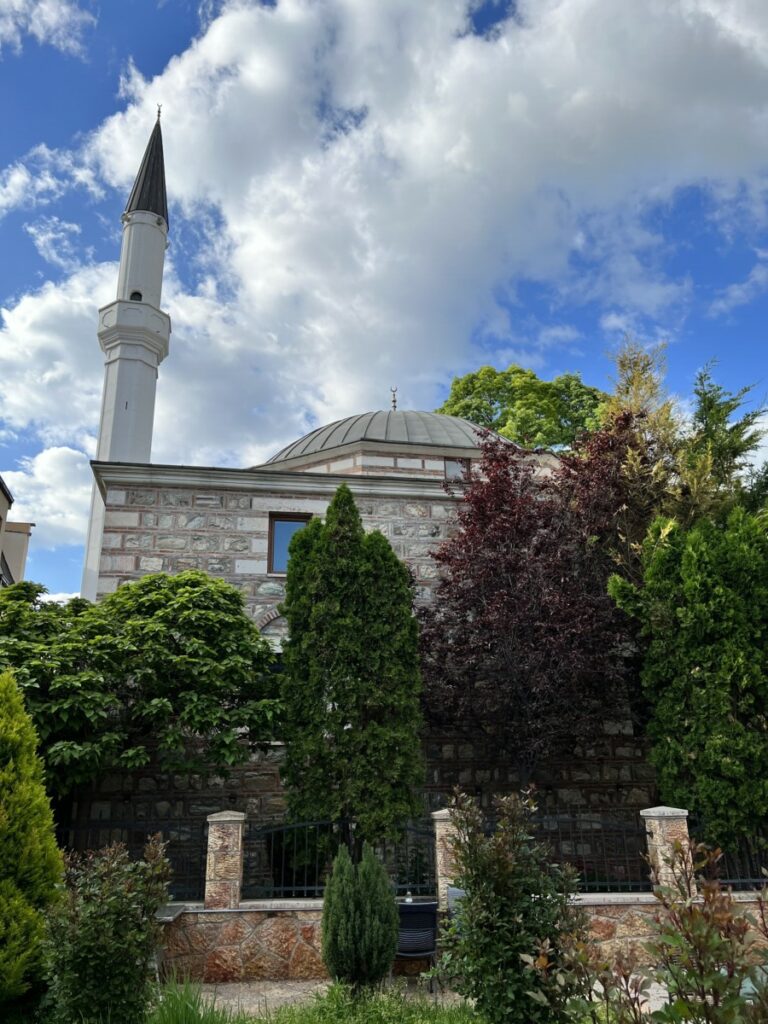
Blog trip
I was invited on a blog tour by Macedonia Experience with five other bloggers. Everything I experienced in Macedonia was covered by them and the places we visited. However, I have full control over what I write.
We were picked up at the airport by Yane and Alexander from Macedonia Experience. They are both knowledgeable and skilled, having planned a packed and content-rich program for us. When things didn’t go as planned due to weather or other issues, they quickly arranged alternatives without us even noticing. We saw a lot during a short time and you should take your time if visiting.
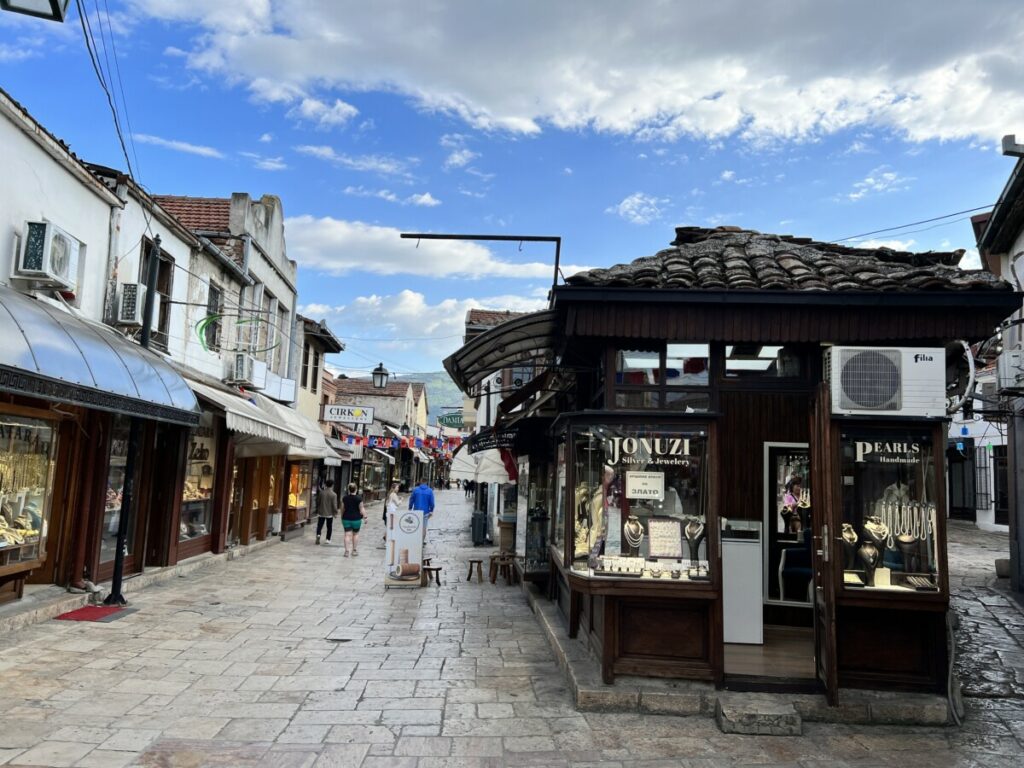
The capital Skopje is a perfect starting point for both a city break in the capital and a tour of the rest of the country.
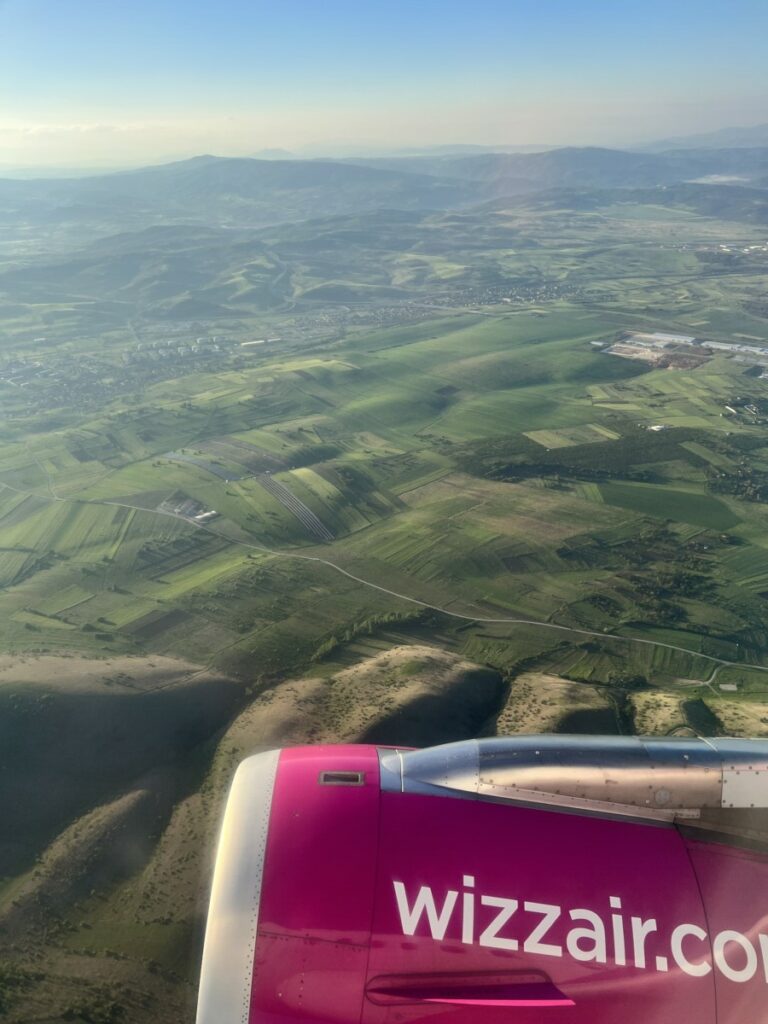
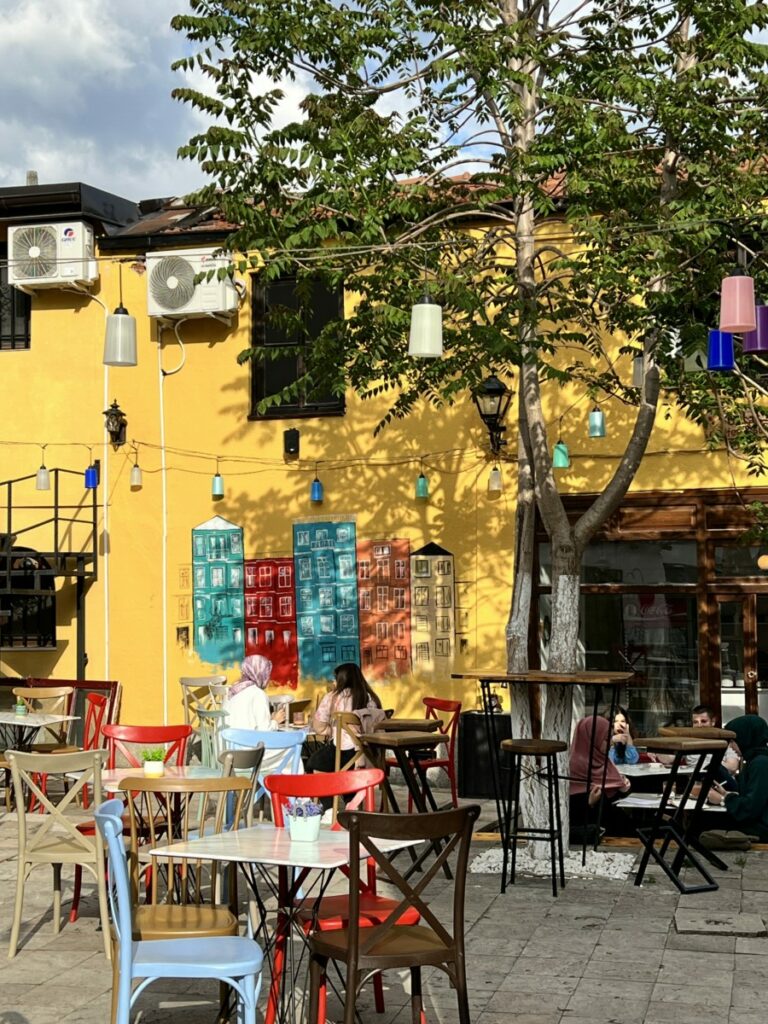
Skopje, like the rest of the country, is a melting pot. Here you’ll find the old town with ancient cobblestone streets, narrow alleys, and shops and eateries for every taste, culture, and religion. You’ll also find modern luxury hotels with sky bars offering views of the entire city and great cocktails, as well as trendy neighborhoods for the young, packed with restaurants and bars buzzing late into the night.
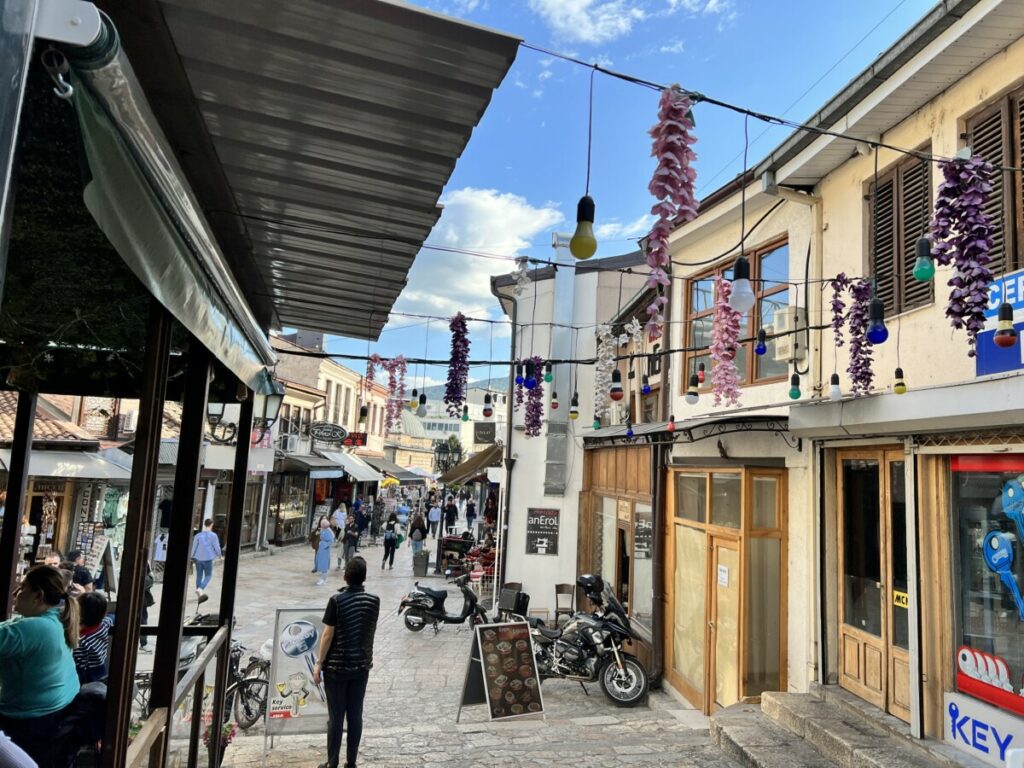
Viewpoints
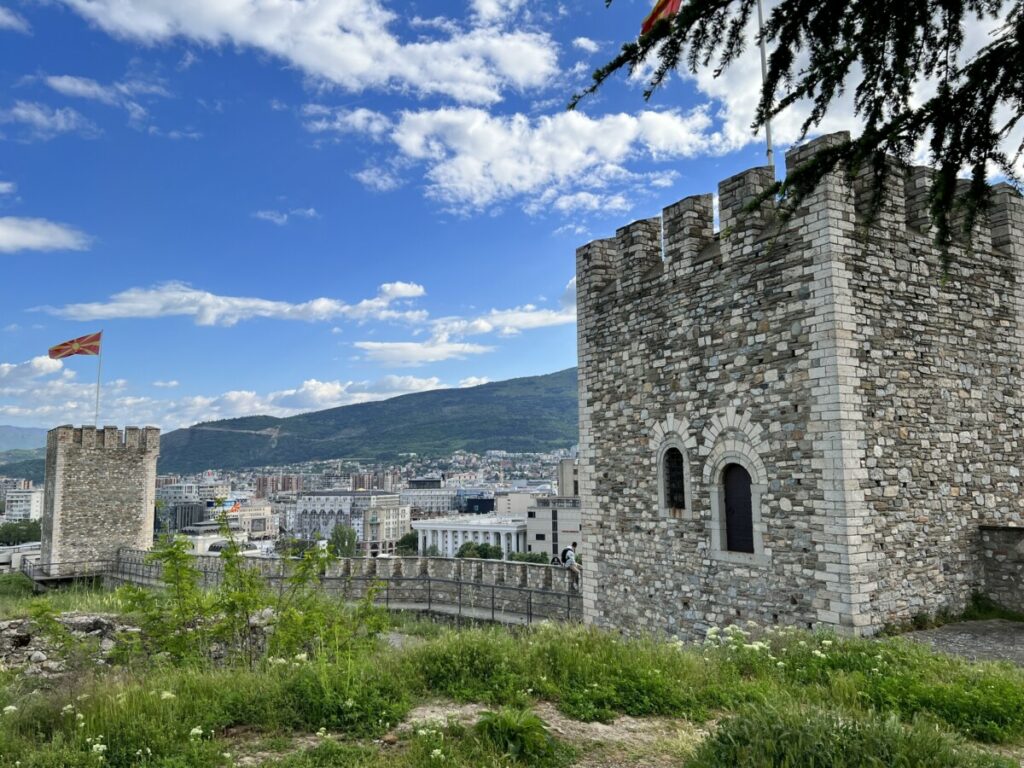
The city’s history dates back over 3,500 years, making it an exciting tourist destination.
We began our tour at the height overlooking the city, where the old walls and towers of Skopje Fort, or Skopje Kale, stand guard. Dating back to the 6th century, the fort has seen many rulers and empires, from the Romans and Byzantines to the Bulgarians and Serbians, and finally the Ottomans. Skopje has always been at the crossroads of important trade routes, especially between east and west.
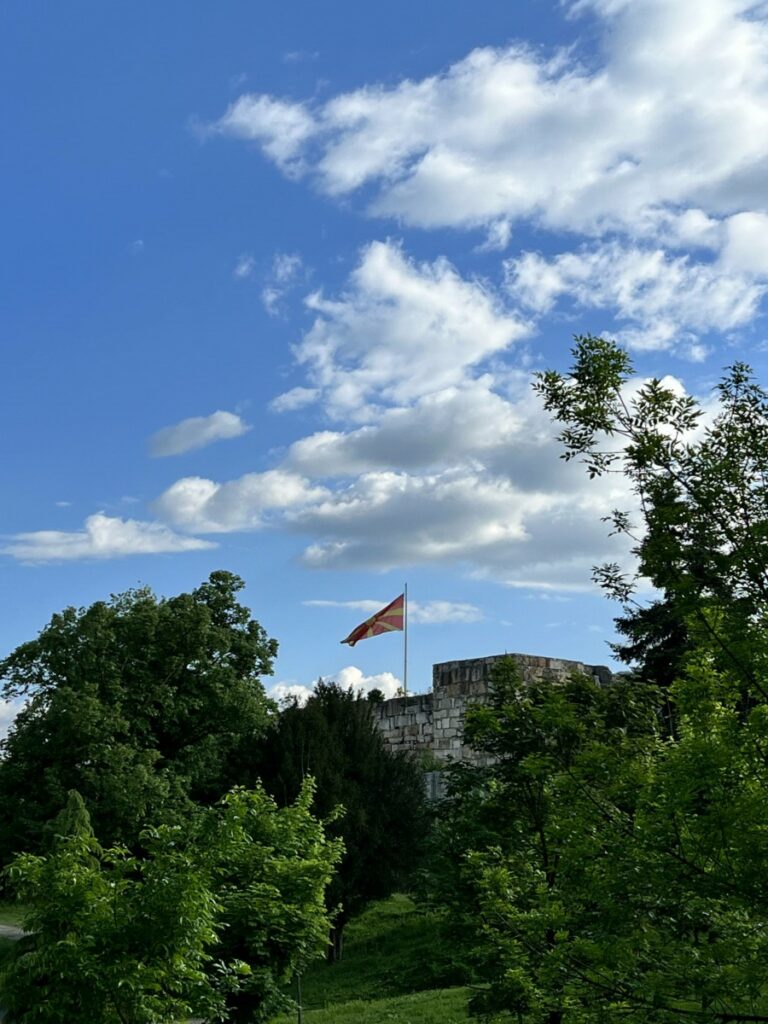
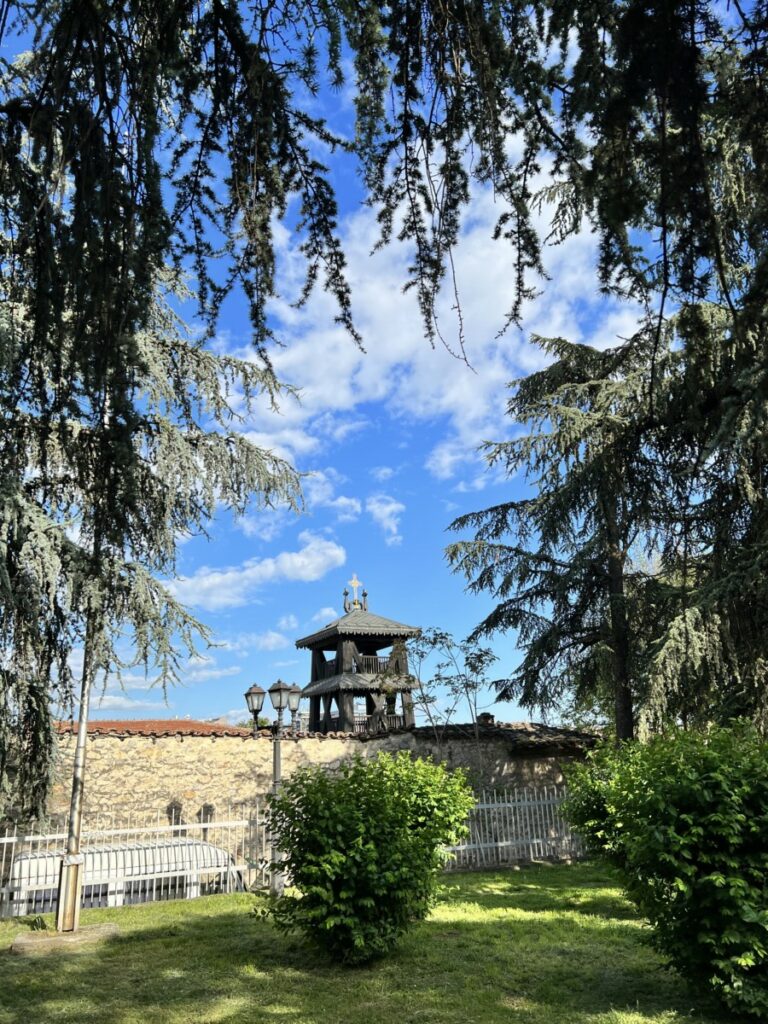
From Kale, you can see both the old town and the modern city, with the football stadium as a prominent landmark. The mountains to the south also dominate the horizon, showing that the city is surrounded by greenery. There are also opportunities for mountain hikes for those interested.
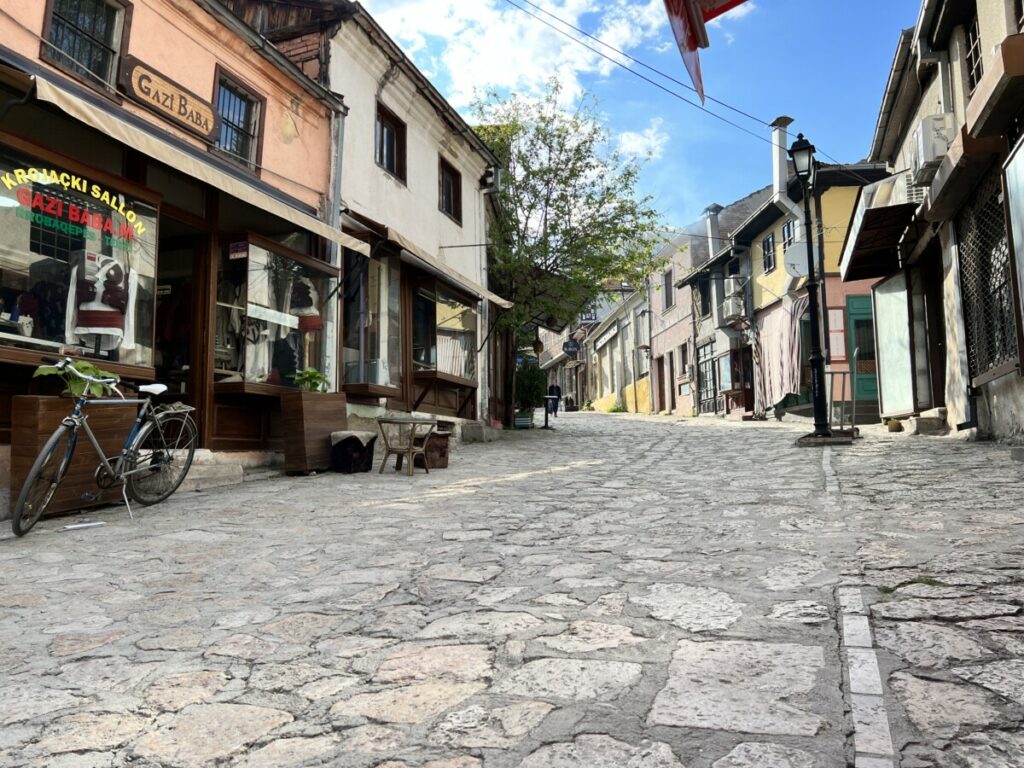
From the fort, you can easily stroll down to the old bazaars. They are not as cramped and claustrophobic as many other bazaars but still offer plenty to see. I was particularly fascinated by the “cobblestones”, large stone slabs worn smooth by centuries of feet scurrying along.
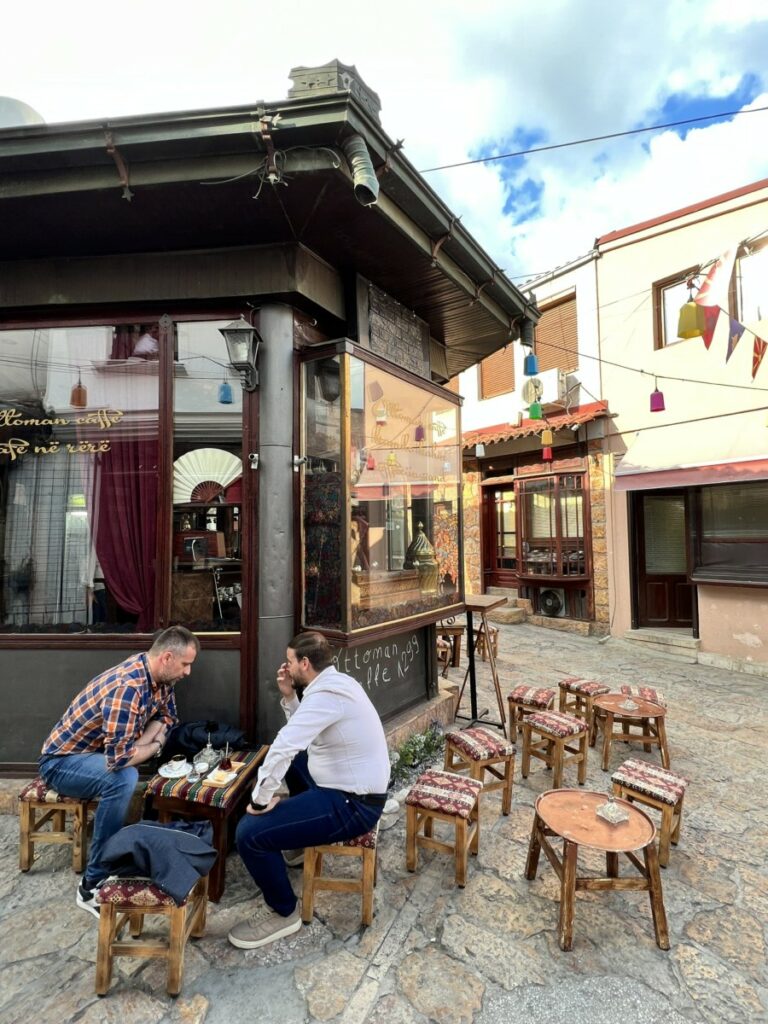
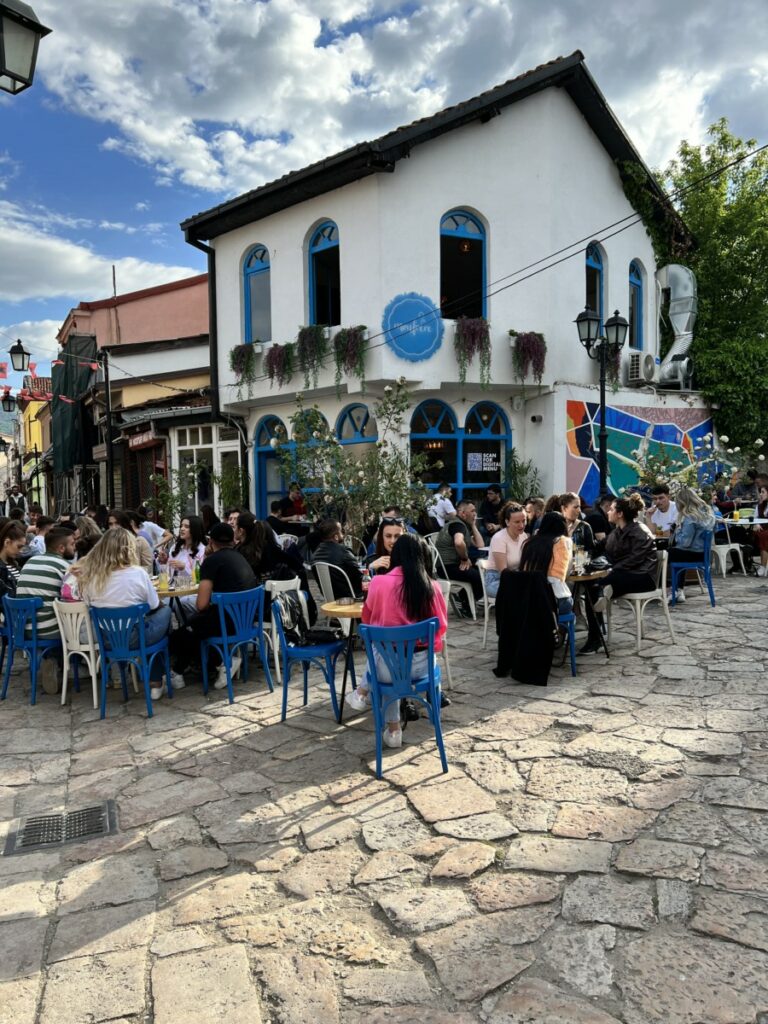
Everywhere you look, there are shops of various kinds, cafes, eateries, and plenty to catch the eye. You’ll find old, “brown” Turkish cafes and hookah lounges, as well as modern, colorful bars for the younger crowd.
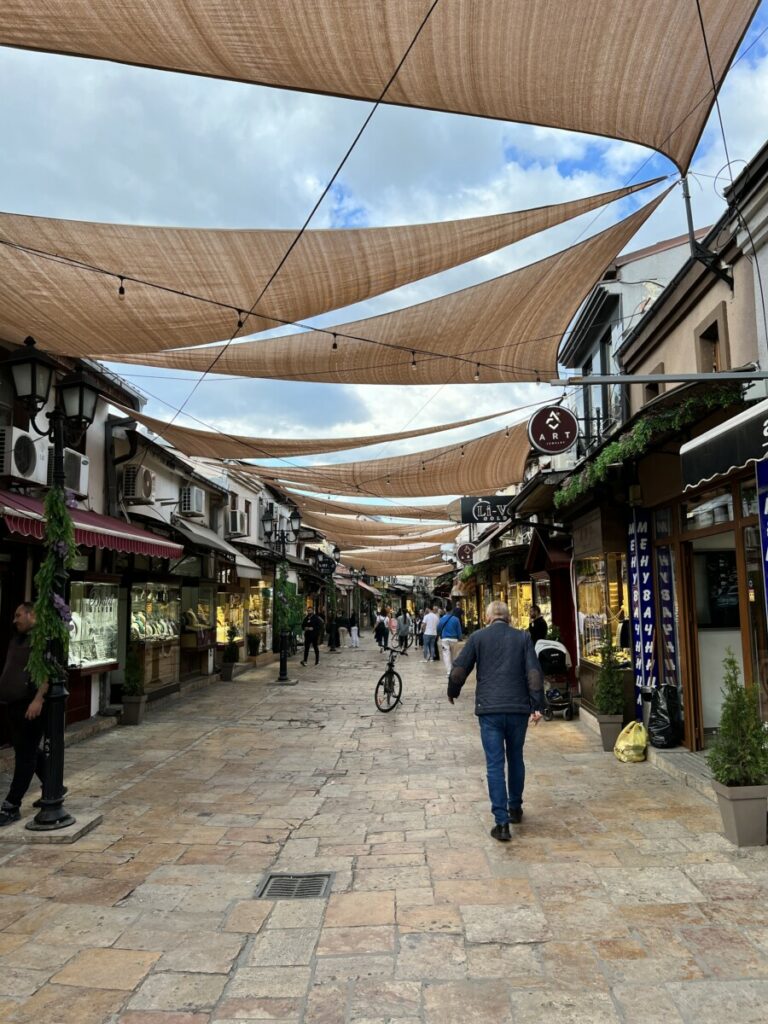
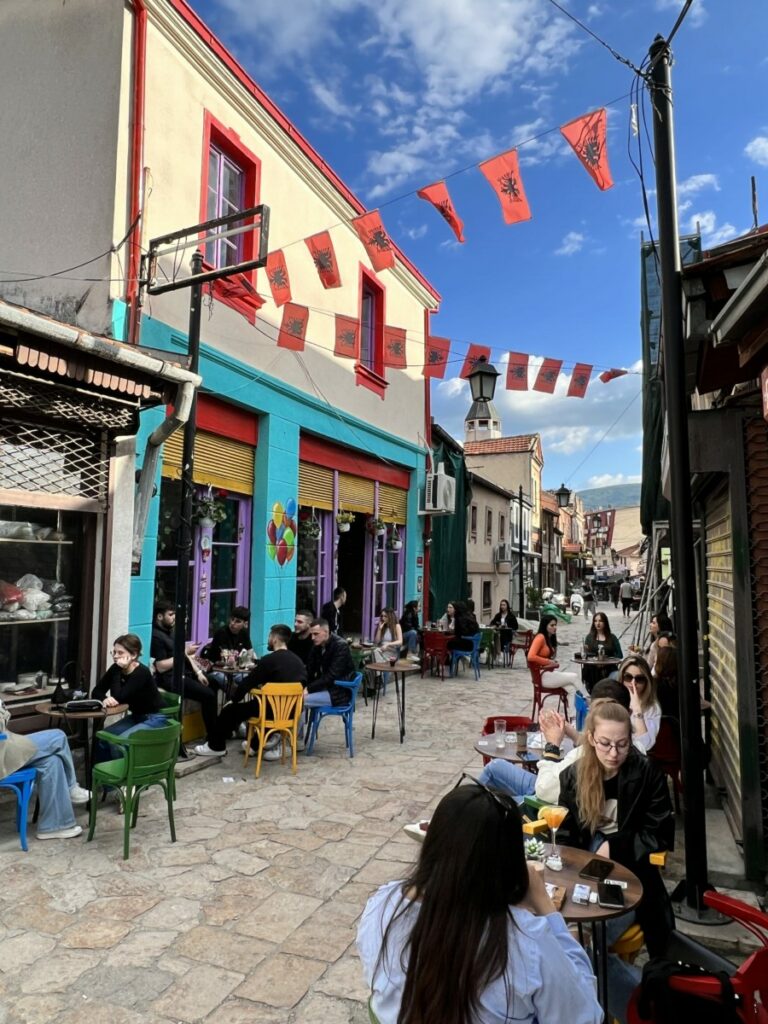
Souvenir
I bought a beautiful rug, an old kilim that now adorns the floor of my house in France. Perfect size and a great price. Heavy, but it fit as hand luggage in a trash bag!

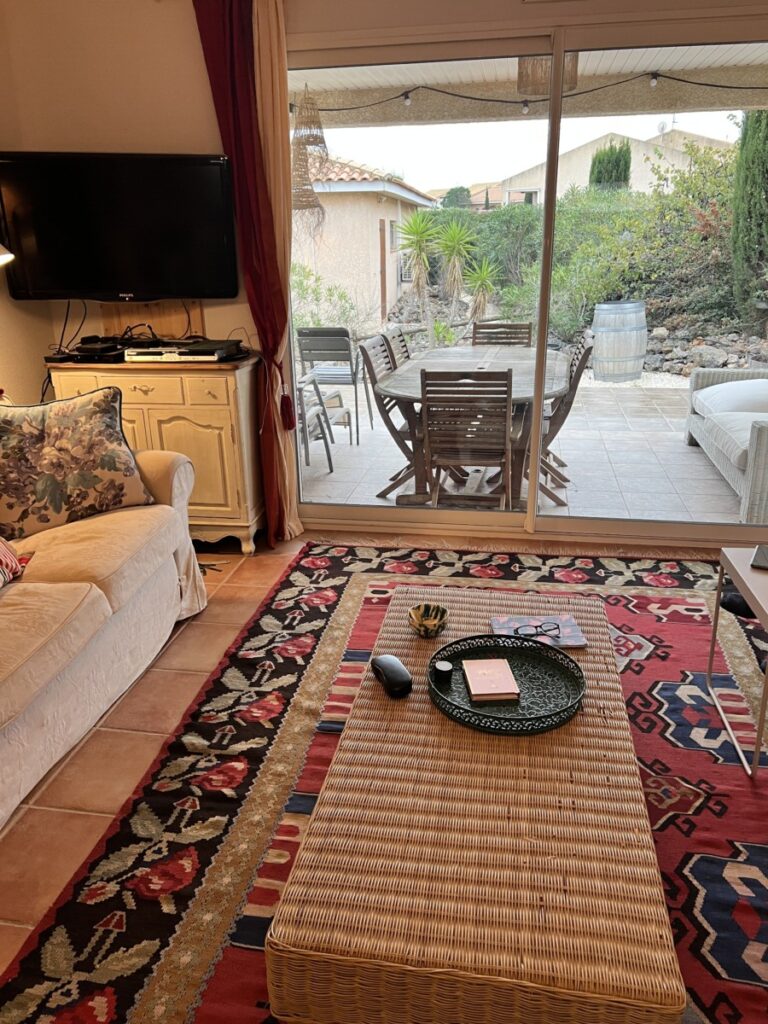
I would have loved more time to explore the shops and eateries here. We visited several historical buildings that, unfortunately, were closed, such as Kuršumli An, an old “inn” with stables for 500 animals where travelers could stay overnight. We only got a peek through the keyhole! Right next to it is the National Museum of Macedonia.
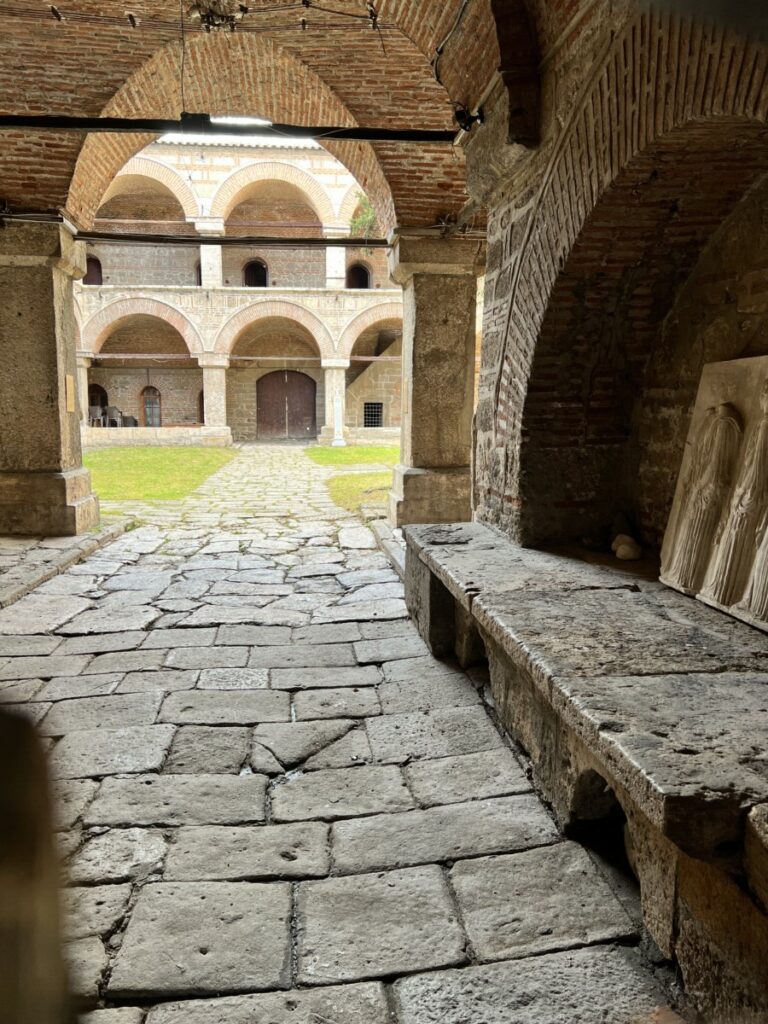
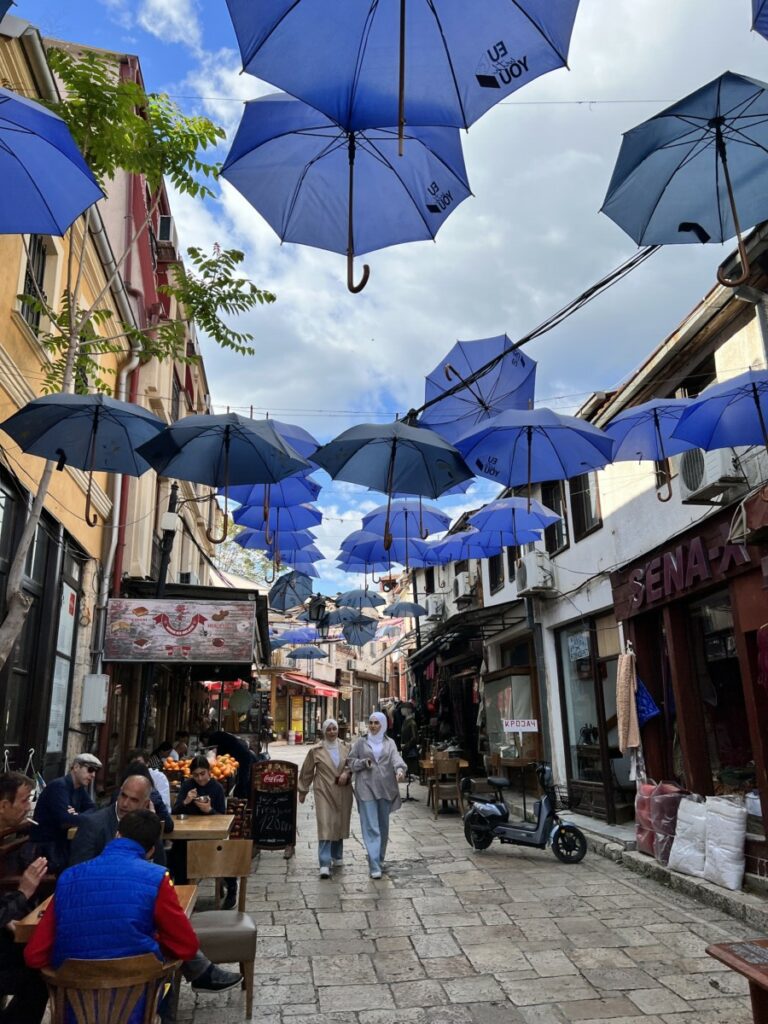
From the bazaars, it’s a short walk to the Vardar River and the impressively massive bridge that connects the two sides of the city. The Stone Bridge, or Dušan Bridge, is a well-known landmark and features prominently on Skopje’s coat of arms. The current bridge is believed to have been built by the Turks in the 15th century.
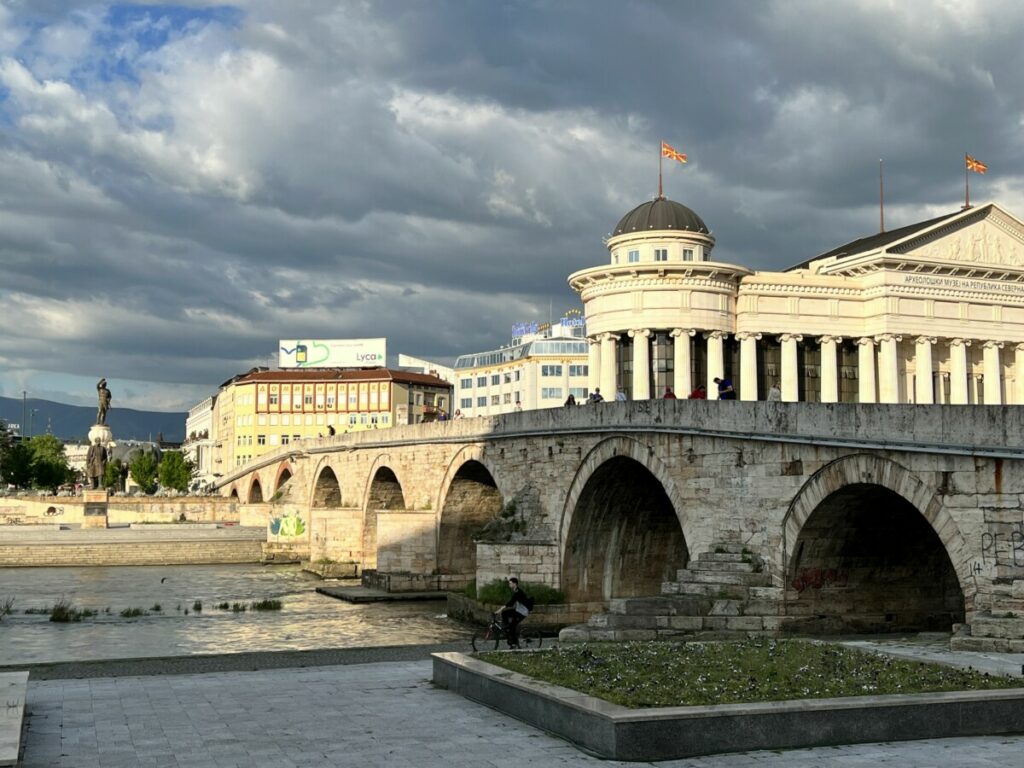
Majestic Monuments
On both sides of the bridge, you’ll see enormous statues and monuments of national heroes. Skopje is known for its massive statues and monuments. First, we encountered the enormous fountain called “Olympia – Mother of Alexander III of Macedonia,” which is a bit odd since it’s Alexander’s father, Philip II, who stands on the pedestal.

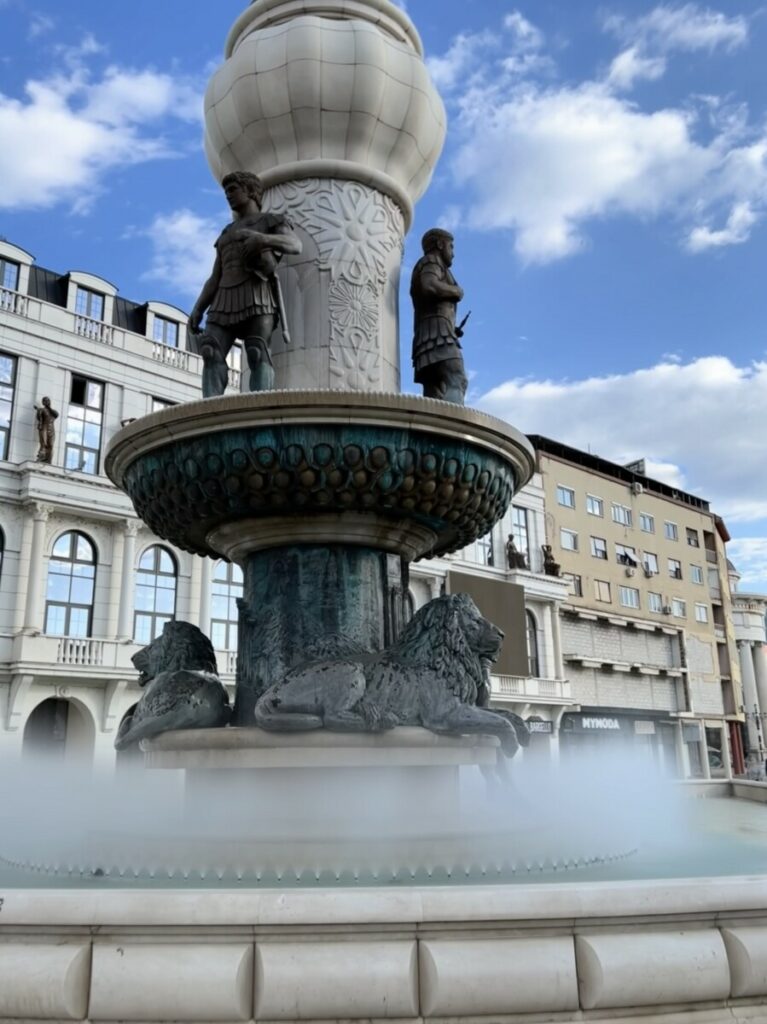
On the other side of the bridge, in the majestic square known as “Macedonia Square,” we can see the national hero Alexander the Great on another imposing pedestal. Although Alexander was Macedonian, he was actually born in what is now Greece. This doesn’t stop the Macedonians from embracing him as their great hero.
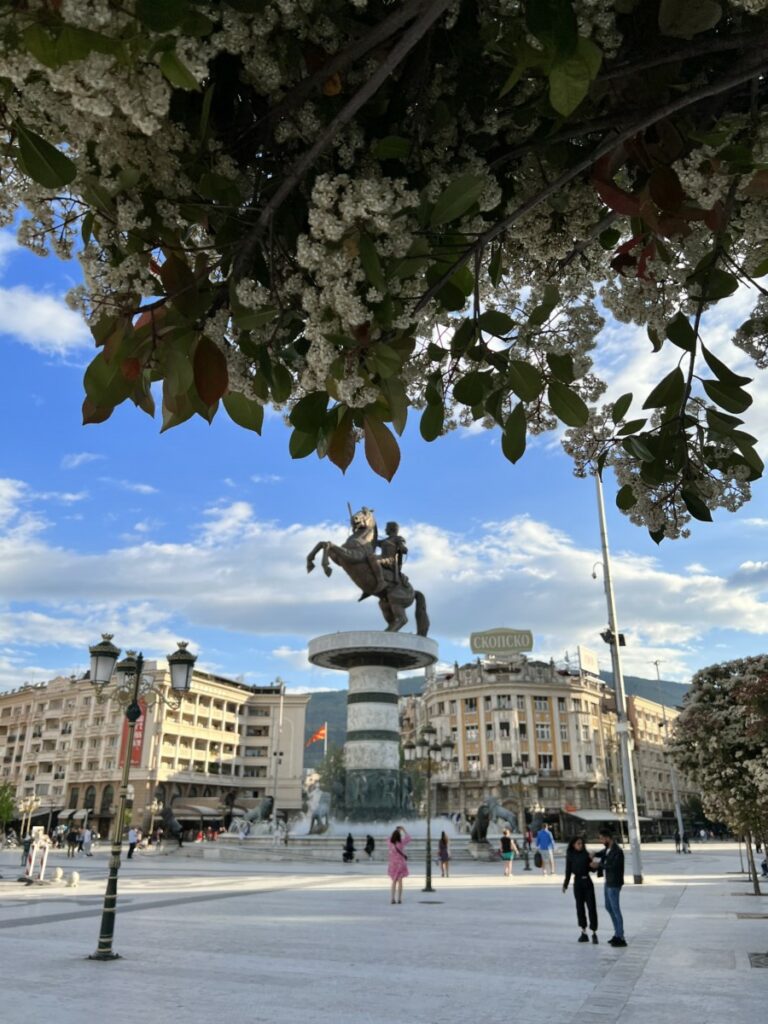
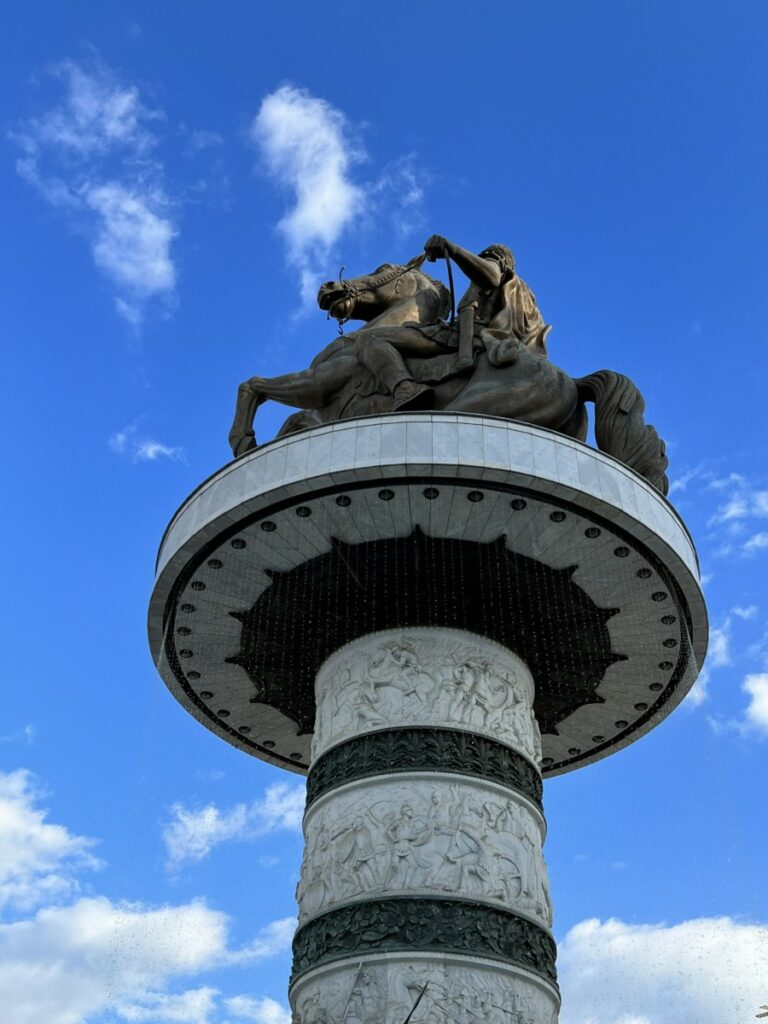
The history comes into perspective when you know that Alexander was tutored by Aristotle. This adds an even more historic aura to the square and the city, even though Skopje was founded a few hundred years after Alexander’s death, and he likely never set foot here.
Old Meets New
Around the square, you’ll find the more modern side of Skopje, with luxury hotels like the Marriott and large shopping centers. A bit up the hill is the luxury hotel Panoramika, featuring a fantastic bar and restaurant on the top floor.

Here, you can enjoy delicious cocktails and food while taking in the view of the entire city. It’s a great place to relax after a day of exploring. We were driven there, and I think that’s a good idea, as it’s quite a steep climb up the hill. Google says it takes about 40 minutes to walk from the Stone Bridge. We only had time for a drink, but I can easily imagine enjoying a dinner here as the city lights come on.
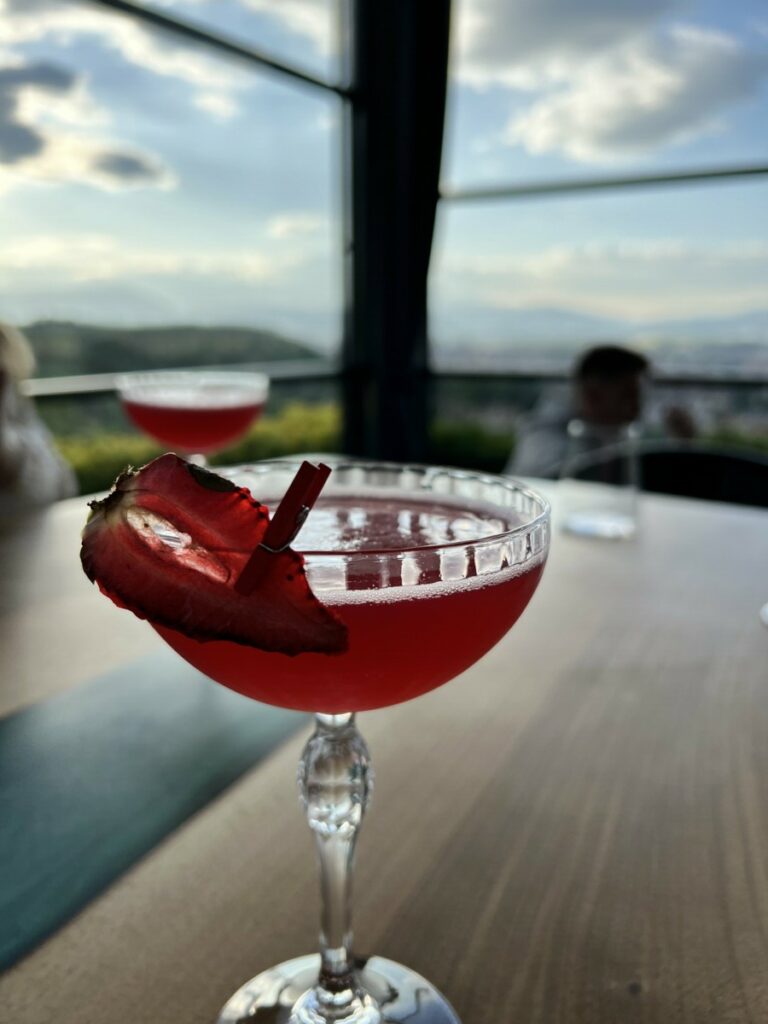
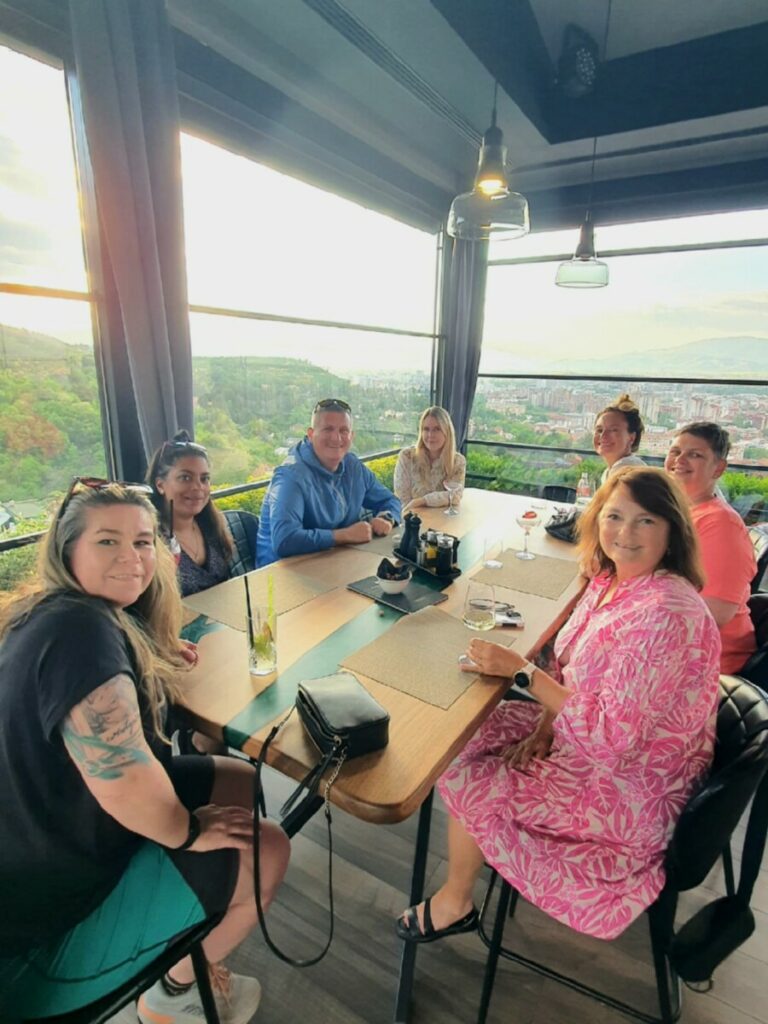
Vibrant Neighborhood
Our final stop was the more “bohemian” and youthful part of the city, where we stayed at Hotel Tims. This hotel is more centrally located than Panoramika. It takes about 20 minutes to walk to the Stone Bridge from there.
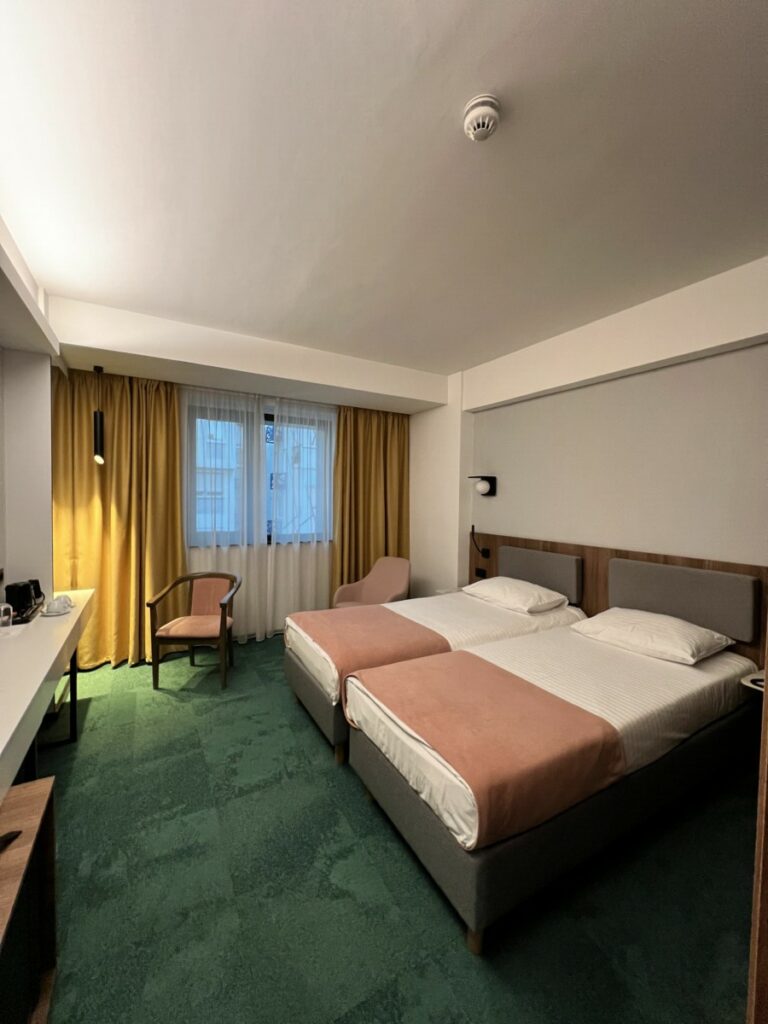
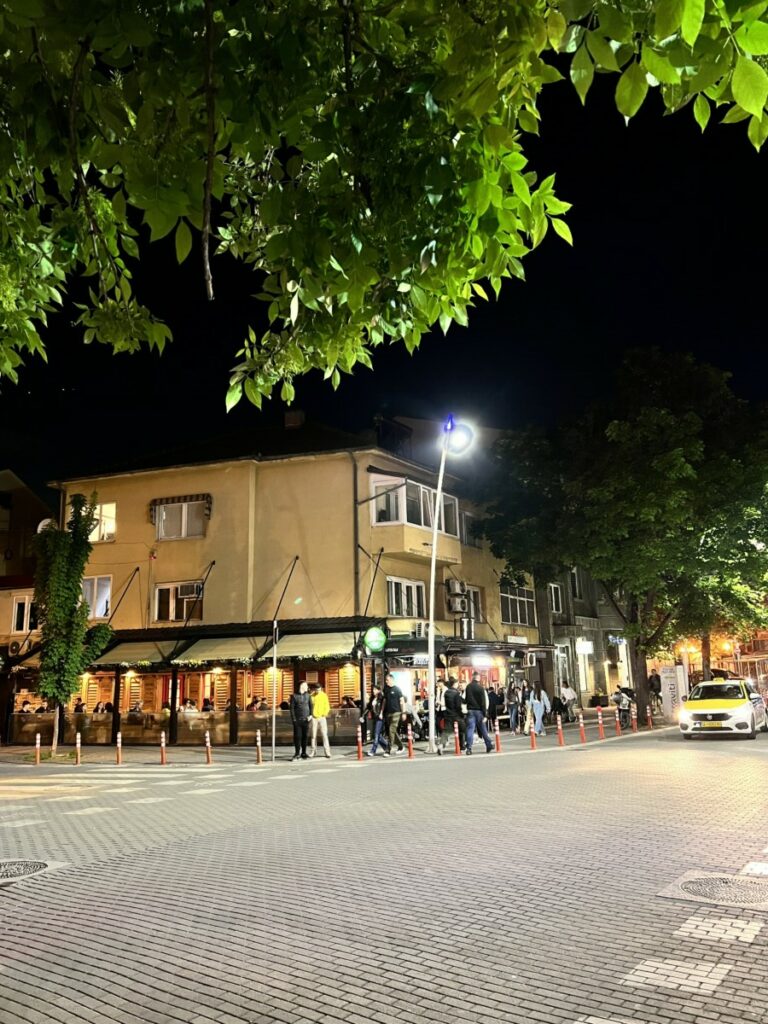
The advantage of this area is the abundance of restaurants and bars just minutes away. There’s also a large park between the hotel and the river, perfect for a stroll or a jog. Along the river, there are nice walking paths that lead into the old town. We didn’t have much time at the hotel, as shortly after checking in, we headed out for our last meal in North Macedonia.
Vi fikk ikke mye tid på hotellet, for rett etter at vi sjekket inn på Tims, skulle vi ut igjen for vårt siste måltid i Nord-Makedonia.
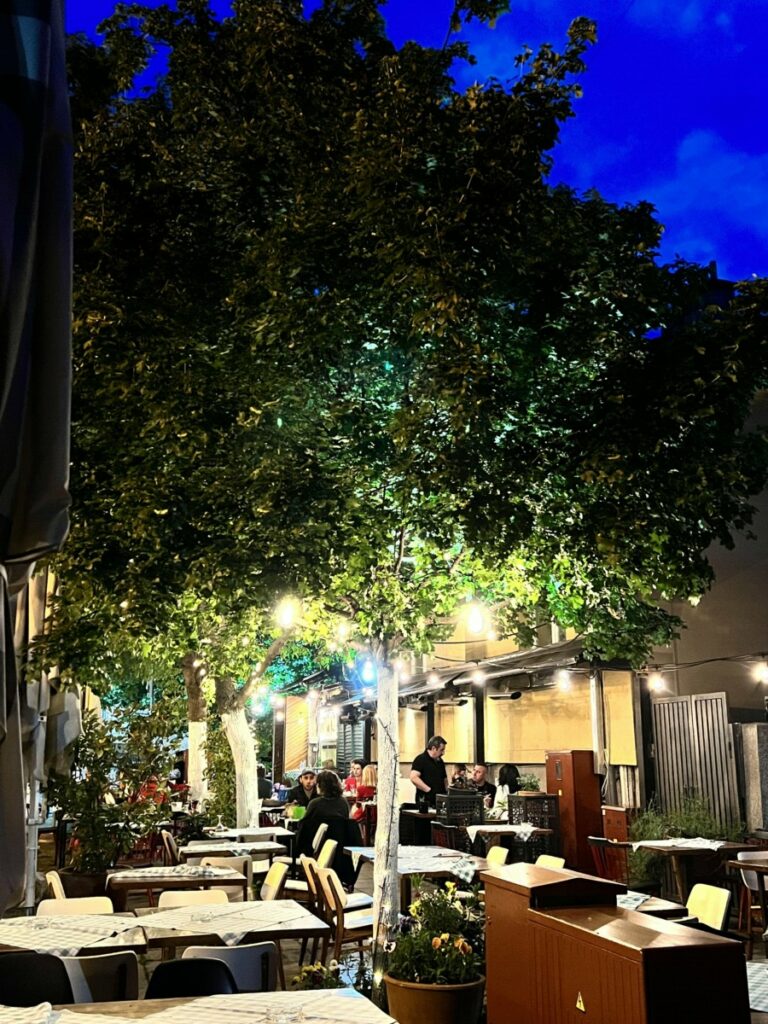
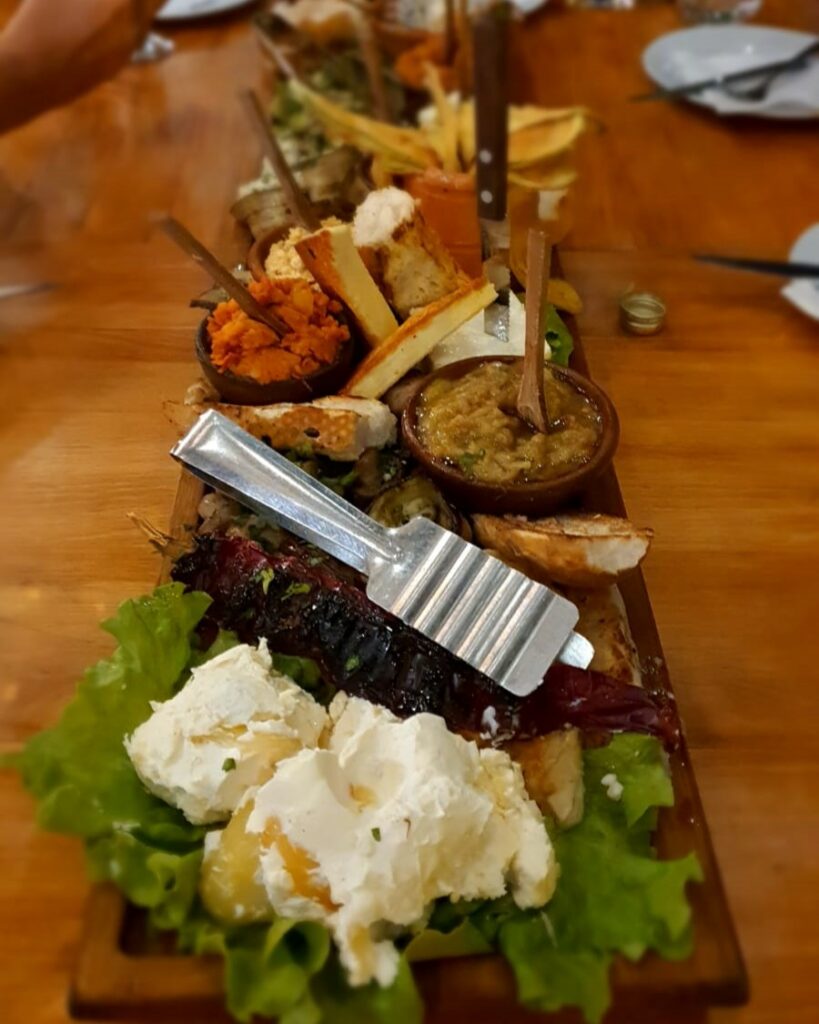
We ended up in an area with many bars and restaurants, bustling with life even in early May. People were sitting outside under heat lamps, enjoying some drinks.
Our last meal
We settled down at Chardak, and as with the rest of the trip, we were served huge amounts of food. The Macedonians know how to serve up a feast!
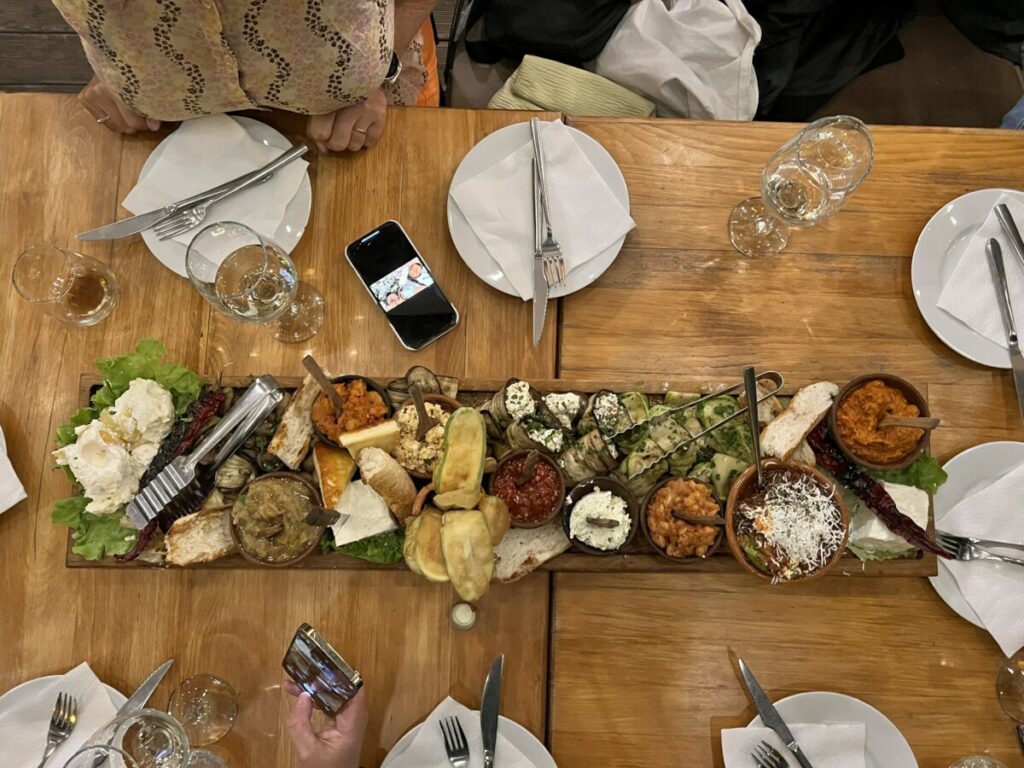
The meal starts with many small dishes, allowing us to taste a variety of things. There was cheese, meat, pâtés, the traditional ajvar (a pepper purée that’s incredibly delicious spread on bread), traditional “pies” (filo-like pastries with spinach and cheese filling), and much more.
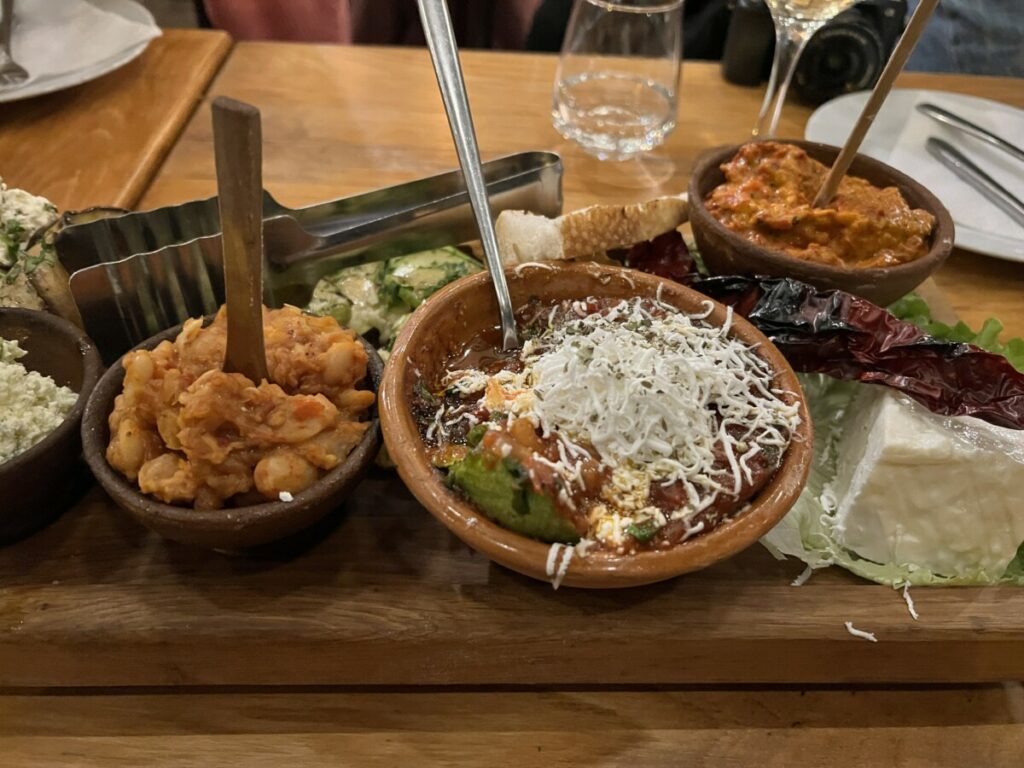
The problem is that you fill up on the starters and don’t have much room left for the main course! We had caseroles of chicken or meat, slow-cooked with vegetables and beans, bursting with flavor. All of this was washed down with generous amounts of local wine.
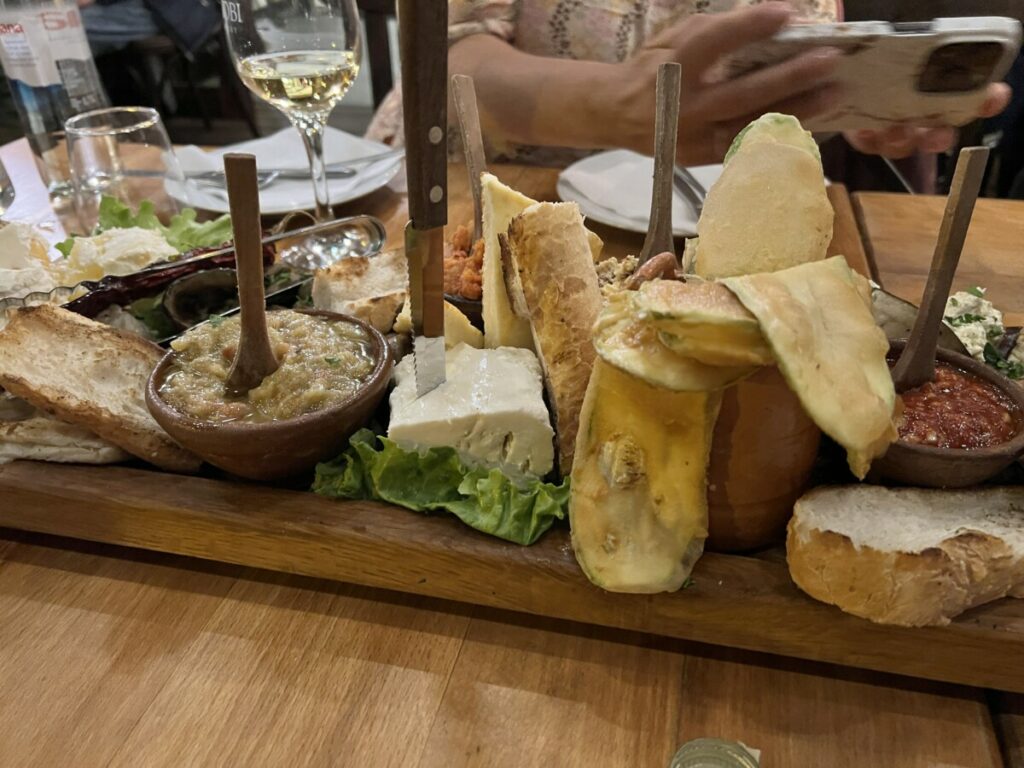
And as if that wasn’t enough, another round of desserts followed.

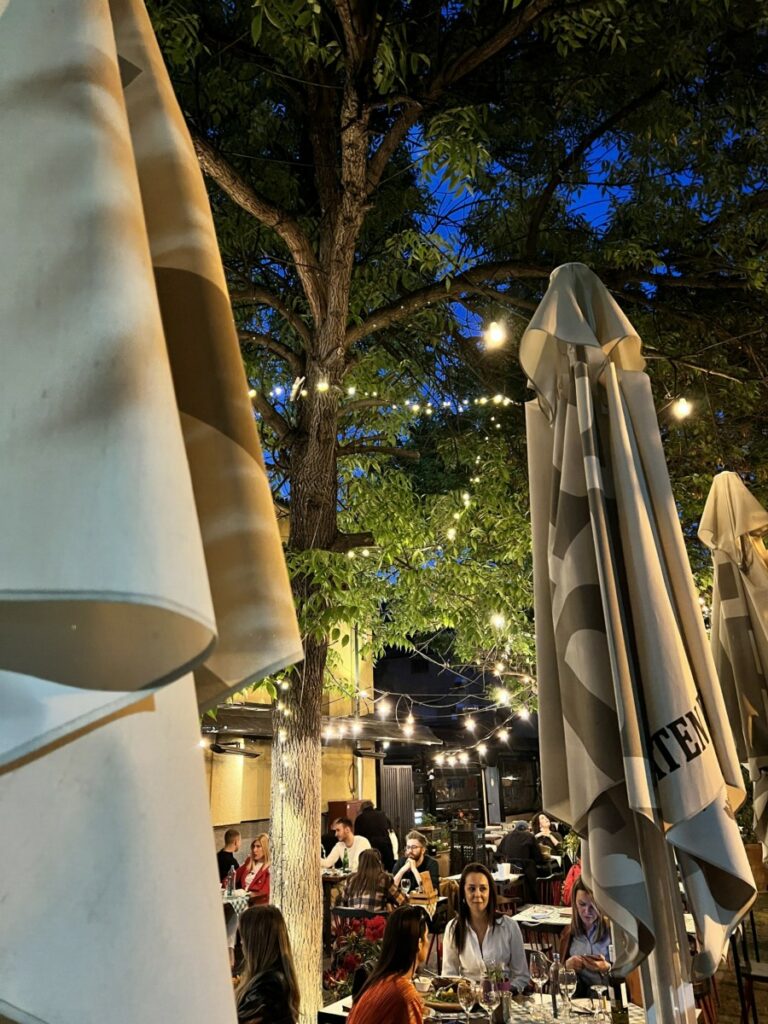
In Macedonia, they are extremely proud of their culinary traditions. You won’t find many places serving sushi, burgers, or tacos. Most restaurants serve traditional dishes, and when you travel to a country like North Macedonia, it’s to experience the local culture and try new, exciting things.
I have another blog article on the food and especially the wine of Macedonia.
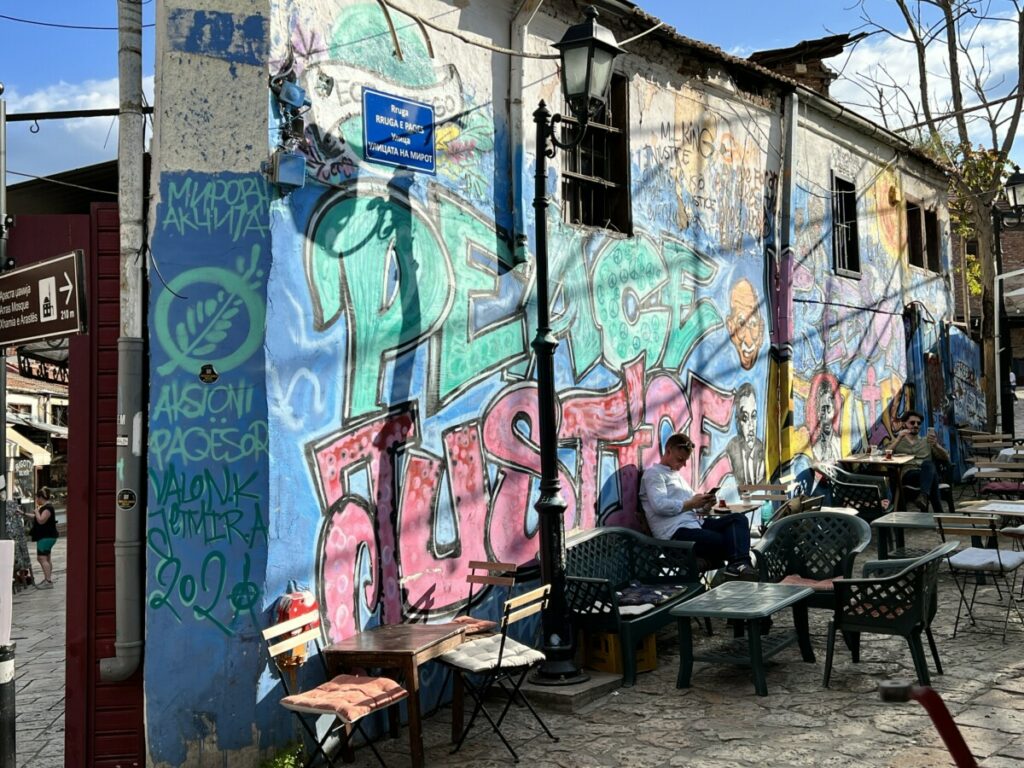
We had far too little time in Skopje, and I would love to go back. I want to explore the shops in the bazaars and visit museums to learn more about this melting pot influenced by so many cultures; Greek, Roman, Slavic, and more. They share linguistic roots with some neighbors, the alphabet with others, and religion with yet others. Their history is intertwined with the entire Balkan region, even though they are closely tied to Greece in many ways.
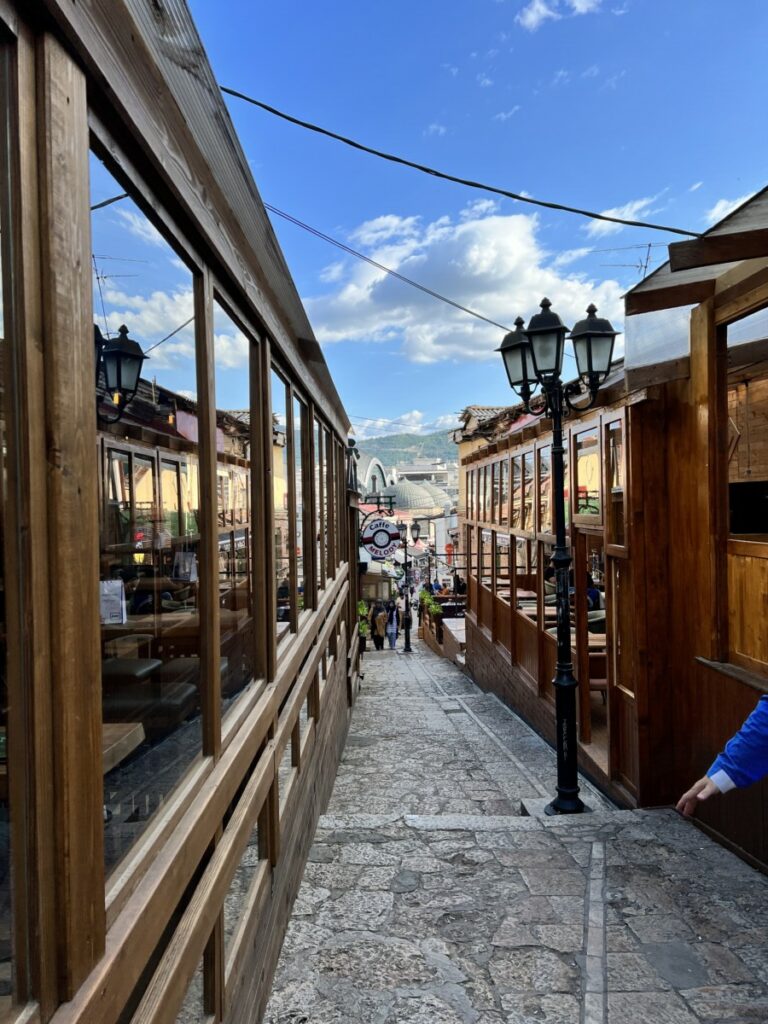
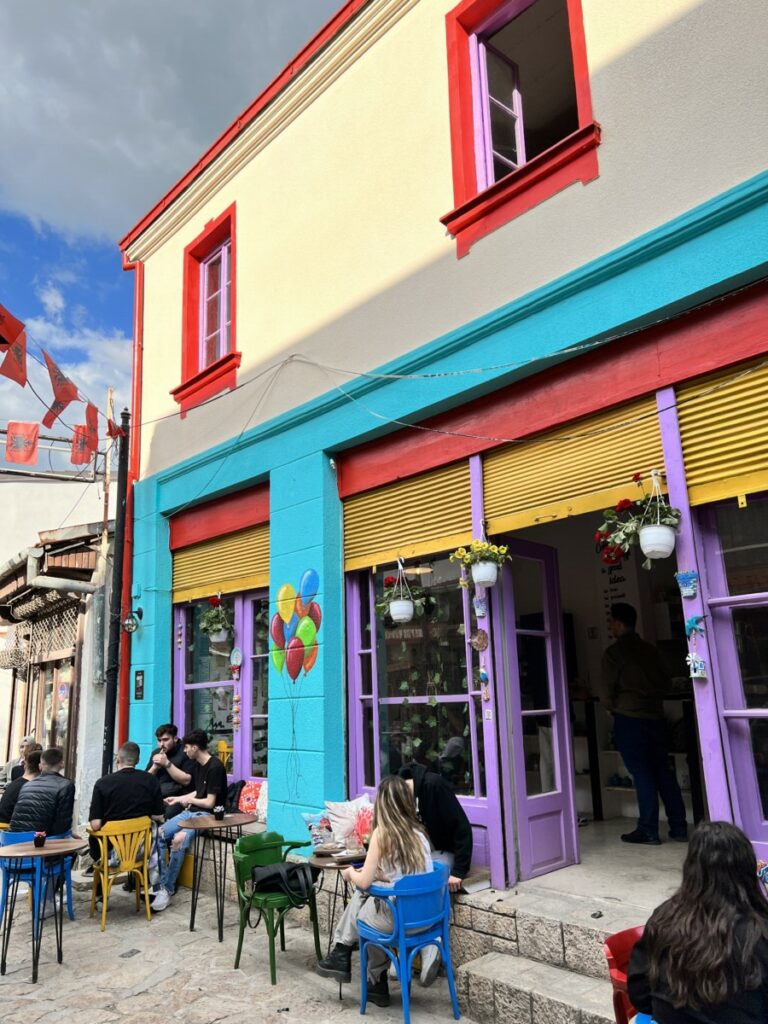
If you’re considering a long weekend getaway to somewhere new, I highly recommend Skopje and North Macedonia. And if you want a tailored trip to explore more of this country with friends or family, I can wholeheartedly recommend Macedonia Experience. They speak excellent English and share a wealth of historical knowledge about the country and the places they take you to. It’s an unforgettable experience.
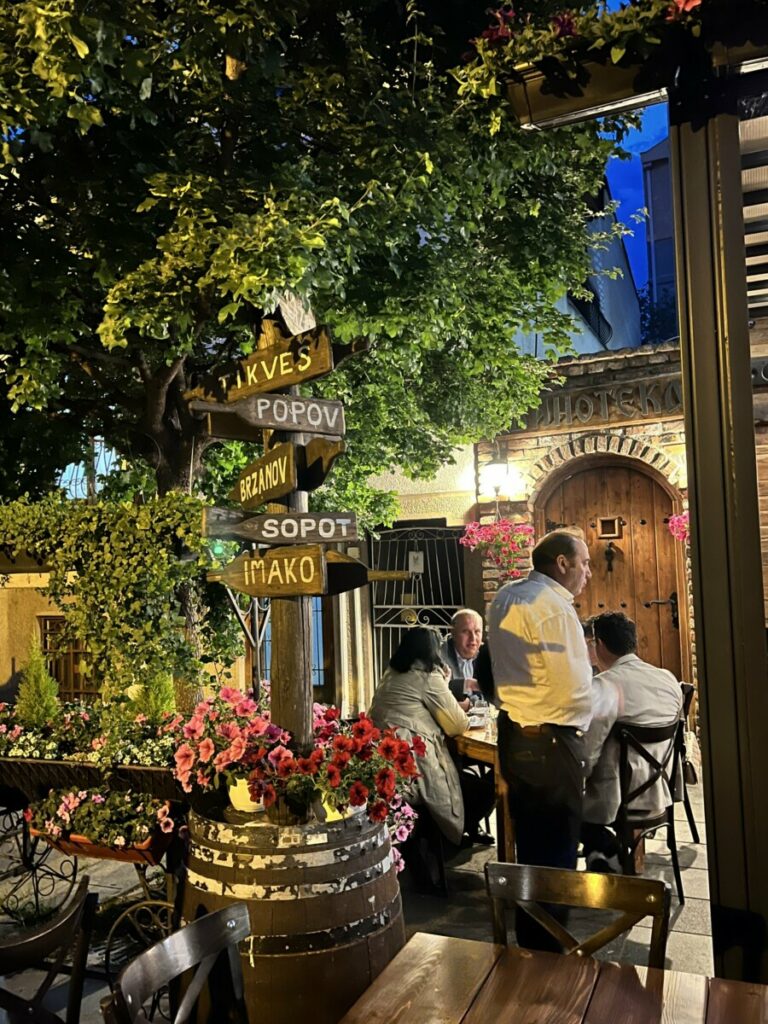
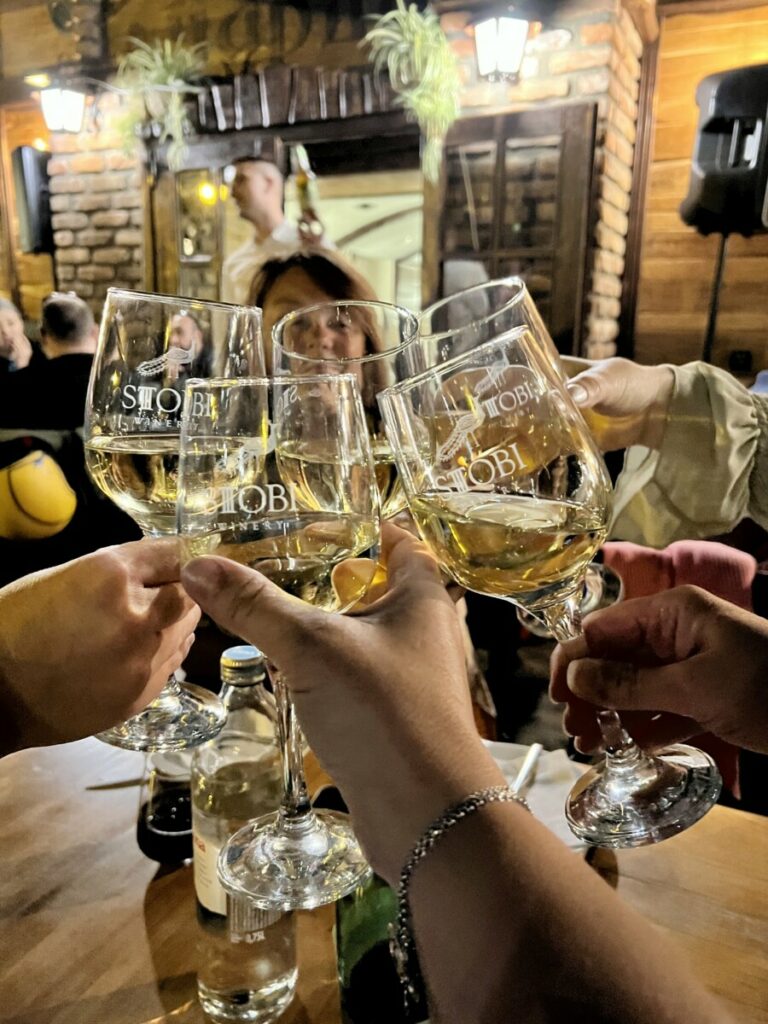
Have questions? I’m happy to help! Thank you, Skopje!
If you want to read more about Macedonia, you can check out the article about Ohrid and Prespa.
For more of my travels, follow catrines.reiser on Instagram or you can like or follow my Facebook page called Catrines reiser.

